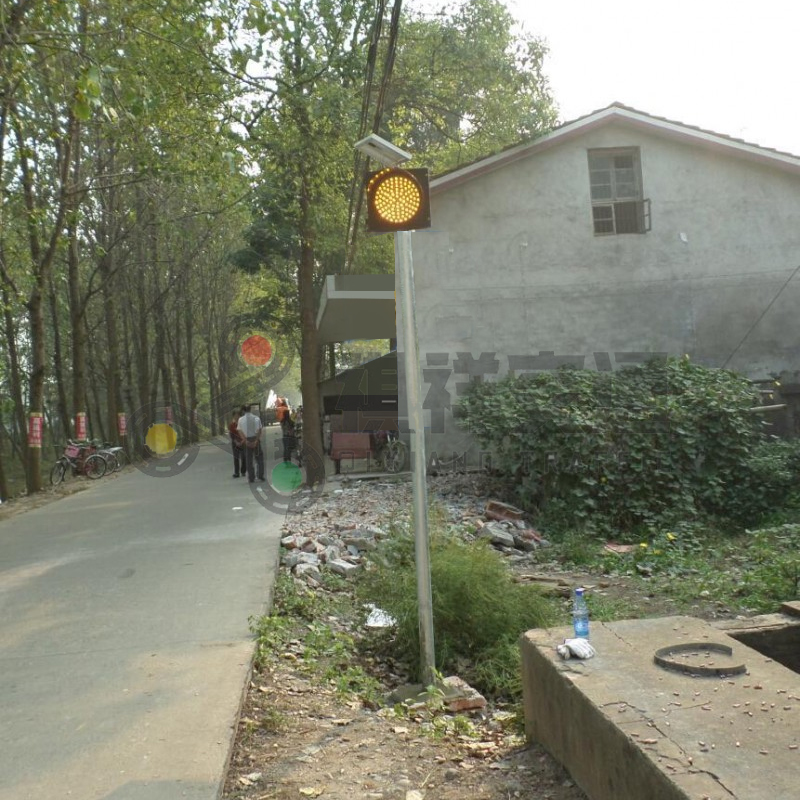In the field of safety and warning signals, solar yellow flashing lights and strobe lights play a vital role. These lights are designed to alert and warn people in a variety of environments, from roads to construction sites. However, there are clear differences between these two types of lights, including their functionality, power sources, and applications. In this article, we’ll take a closer look at the characteristics of solar yellow flashing lights and strobe lights, highlighting their differences and the specific scenarios in which they are most effective.
Solar yellow flashing lights, as the name suggests, are powered by solar energy. These lights harness solar energy through photovoltaic cells, converting it into electricity to light up the yellow flashing lights. This sustainable power source makes solar yellow flashing lights an environmentally friendly and cost-effective option for warning signals. They are often used in areas where electricity supply is limited or where traditional wired lights cannot be installed.
Strobe lights, on the other hand, are typically powered by electricity and are known for their intense, high-intensity flashes. Unlike solar yellow strobe lights that rely on solar panels to generate electricity, strobe lights connect to a power source, making them a reliable choice for continuous and powerful lighting. Strobe lights are commonly used in emergency vehicles, industrial settings and entertainment venues where bright, eye-catching light is required.
One of the main differences between solar yellow flashing lights and strobe lights is their functionality. Solar yellow flashing lights are designed to emit steady or intermittent yellow light as a warning signal to alert people of potential danger or changes in traffic patterns. These lights are often used in road construction zones, crosswalks, and other areas where visibility and caution are critical. In contrast, strobe lights are characterized by emitting a rapid and intense flash of light, making them very effective at attracting attention and signaling an emergency or critical situation.
In terms of application, solar yellow flash lights are usually deployed in outdoor environments where power is limited or where traditional wired lights cannot be installed. Their reliance on solar energy makes them ideal for remote locations such as country roads, construction sites and temporary workspaces. Additionally, solar-powered yellow flashing lights are favored for their low maintenance requirements and long-term cost savings, making them a practical solution for sustainable warning signals.
In contrast, strobe lights are typically used in environments that require an immediate and eye-catching visual alert. Emergency vehicles such as ambulances, fire trucks and police cars are equipped with strobe lights to indicate their presence and navigate traffic. Industrial facilities utilize strobe lights to indicate hazardous situations, mechanical failures, or the need for evacuation. In addition, strobe lights are also used in entertainment and event production to create dynamic lighting effects and enhance the audience’s visual experience.
Another differentiating factor between solar yellow flash lights and strobe lights is their visibility and range. Solar yellow flashing lights are designed to provide a consistent and easily discernible warning signal at medium distances. Its purpose is to alert individuals to potential hazards and promote safe navigation in specific areas. In contrast, strobe lights are designed to emit a powerful light that can be seen from considerable distances, making them very effective at attracting attention and conveying urgent messages across larger spaces.
In summary, while solar-powered yellow flashing lights and strobe lights are important warning signs in a variety of settings, they differ significantly in power source, functionality, application, and visibility. Solar yellow flashing lights are powered by solar energy and provide a sustainable and cost-effective solution for outdoor warning signals, especially in areas with limited electricity supply. Electrically powered strobes, on the other hand, are known for their intense flashes and are often used in emergency, industrial, and recreational settings. Understanding the differences between these two types of lights is crucial to choosing the most appropriate warning signal for a specific environment and ensuring the safety and visibility of personnel in different scenarios.
Post time: Aug-08-2024







